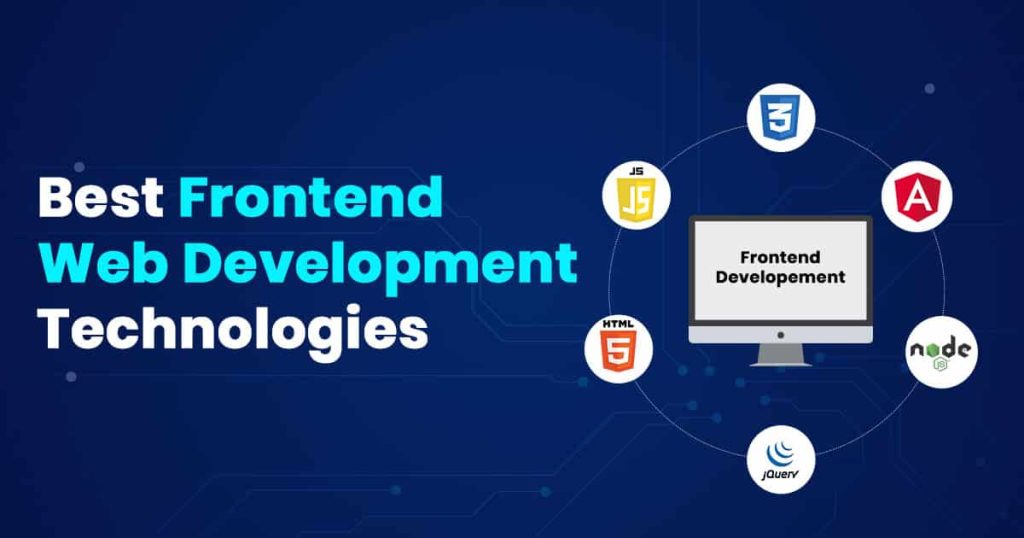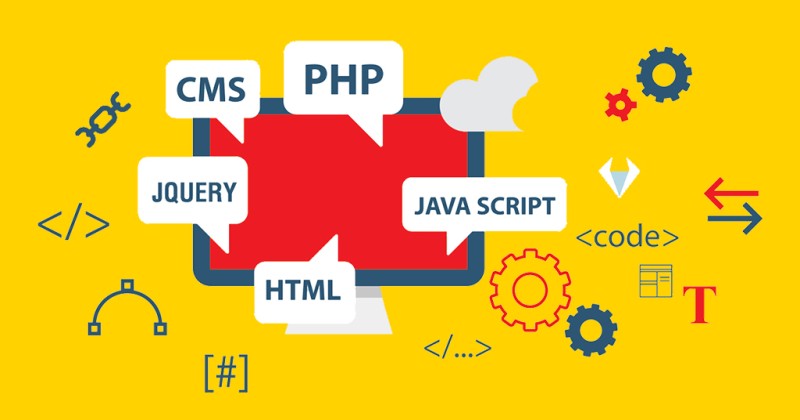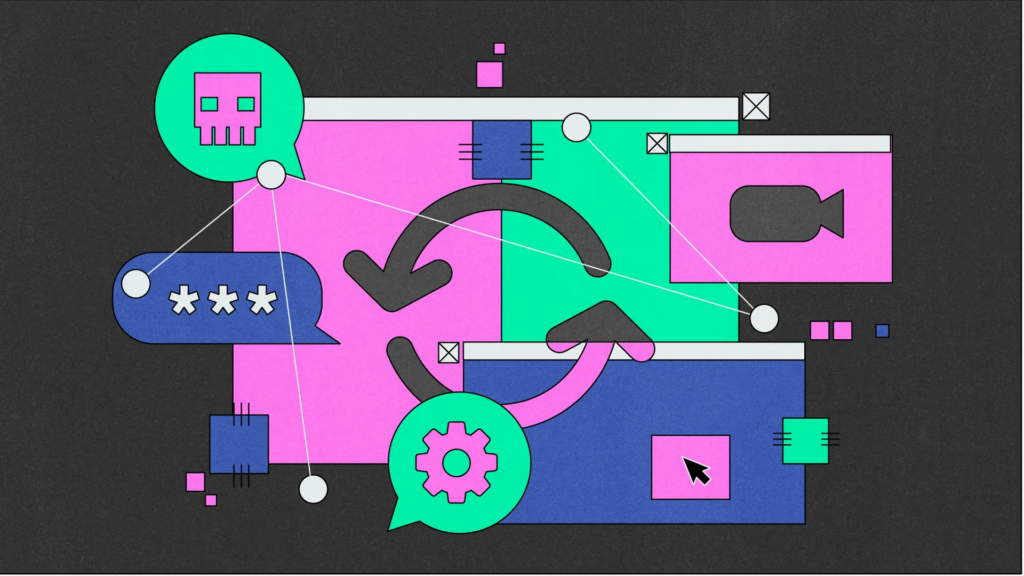Web development is a constantly evolving field, with new technologies and frameworks emerging all the time. Here are some of the Top 7 Best Web Development Technologies to use in 2023 & Beyond also latest technologies and trends in web development:
React
React is a popular JavaScript library for building user interfaces. It allows developers to create reusable UI components and provides a high level of performance and scalability.
React is an open-source JavaScript library used for building user interfaces. Developed by Facebook, it is now widely used by developers and companies around the world. React is designed to be declarative, efficient, and flexible, making it an ideal tool for building complex user interfaces.
One of the key features of React is its use of a virtual DOM (Document Object Model). The virtual DOM is a lightweight representation of the actual DOM that allows React to update the user interface efficiently. When a user interacts with a React app, the virtual DOM is updated, and React only updates the actual DOM elements that have changed, rather than re-rendering the entire page. This makes React apps fast and responsive, even for complex user interfaces.
React also uses a component-based architecture, where each component is a self-contained module that can be reused across the app. Components are written in JavaScript and can be used to define UI elements, such as buttons, menus, and forms. This modular approach makes it easy to build and maintain large-scale applications.
In addition to its core library, React has a rich ecosystem of third-party packages and tools. These include tools for testing, routing, state management, and more. React can also be used with other libraries and frameworks, such as Redux, GraphQL, and Next.js.
React has become a popular choice for building web applications, mobile apps, and even desktop applications. Its flexibility, performance, and ease of use make it an ideal tool for developers looking to build modern, scalable user interfaces
Next.js
Next.js is a framework built on top of React that enables server-side rendering and static site generation. It allows developers to create fast, responsive web applications with minimal setup.
Next.js is a React-based web framework for building server-side rendered (SSR) web applications. It was developed by the team at Vercel (formerly Zeit) and is now widely used by developers and companies around the world. Next.js provides a number of features and benefits that make it an attractive choice for building modern web applications.
One of the key features of Next.js is its support for server-side rendering. With Next.js, developers can build web applications that render content on the server, delivering fast load times and better SEO. Next.js also supports static site generation (SSG), which allows developers to generate HTML files at build time and serve them as static files, further improving performance.
Next.js also provides a number of developer-friendly features, such as automatic code splitting, hot module replacement, and built-in support for CSS modules. It also provides a powerful API for creating dynamic routes and handling data fetching, making it easy to build complex web applications.
Next.js also integrates well with other technologies and frameworks, such as React, TypeScript, and GraphQL. It provides built-in support for these technologies, allowing developers to easily integrate them into their applications.
Overall, Next.js is a powerful and flexible framework for building modern web applications. Its support for server-side rendering, static site generation, and developer-friendly features make it an attractive choice for developers looking to build high-performance, scalable web applications.

Jamstack:
Jamstack is a modern web development architecture that emphasizes performance, security, and scalability. It involves using JavaScript, APIs, and Markup (hence the name) to build web applications that are fast and reliable.
JAMstack is a modern web development architecture that stands for JavaScript, APIs, and Markup. It is a combination of technologies and architectural principles that emphasize speed, security, and scalability. JAMstack architecture involves building websites and web applications using pre-built Markup, serverless functions, and client-side JavaScript to deliver a fast and dynamic user experience.
The core principles of JAMstack are:
- JavaScript: JAMstack websites are built using client-side JavaScript frameworks, such as React, Angular, or Vue.js, to handle dynamic functionality.
- APIs: JAMstack websites use APIs to handle server-side functionality, such as user authentication, database queries, and payment processing.
- Markup: JAMstack websites use pre-built Markup to serve static content, such as HTML, CSS, and images. These static assets are served through a content delivery network (CDN), providing fast load times and high availability.
The benefits of using JAMstack include:
- Speed: JAMstack websites are pre-built and served through a CDN, resulting in fast load times and a snappy user experience.
- Security: JAMstack websites are inherently secure, as they do not rely on server-side processing or databases.
- Scalability: JAMstack websites can handle high traffic loads and scale easily, as they are built using pre-built Markup and serverless functions.
- Developer Experience: JAMstack development is highly flexible and allows developers to work with a wide range of technologies and services.
JAMstack has gained popularity in recent years, and many companies are adopting this architecture for their websites and web applications. There are also a number of JAMstack-specific tools and services, such as Netlify, Vercel, and Gatsby, that make it easy to build and deploy JAMstack sites.
Progressive Web Apps (PWAs):
PWAs are web applications that behave like native mobile apps. They are built using web technologies like HTML, CSS, and JavaScript, and can be installed on a user’s device just like a native app. They offer a seamless user experience, even when offline.
Progressive Web Apps (PWAs) are web applications that use modern web technologies to provide a native app-like experience on mobile devices and desktops. PWAs are built using web technologies such as HTML, CSS, and JavaScript, and can be accessed through a web browser like a regular website.
PWAs are designed to offer a number of benefits over traditional native mobile apps, including:
- Cross-platform compatibility: PWAs work across a range of platforms and devices, including mobile, desktop, and tablet devices, as long as they have a modern web browser.
- Installable: PWAs can be installed onto the user’s home screen like a regular app, without requiring the user to download and install an app from an app store.
- Offline functionality: PWAs can work offline or on low-quality networks by caching content and data to provide a seamless experience to the user.
- Improved performance: PWAs use service workers to provide faster load times and smooth user experiences, even on low-powered devices.
- Cost-effective: PWAs eliminate the need to develop and maintain separate code bases for each platform, resulting in cost savings for development teams.
Some examples of popular PWAs include Twitter Lite, Pinterest, and Flipkart. PWAs are gaining popularity in the web development community, and many organizations are adopting them as a cost-effective and efficient way to provide a native app-like experience to their users.
Serverless Computing:
Serverless computing is a cloud-based computing model in which developers write and run code without having to worry about managing servers or infrastructure. It allows for greater scalability and cost-effectiveness.
Serverless computing is a cloud computing model in which the cloud provider manages the infrastructure and automatically allocates resources to run applications. In a serverless architecture, developers do not need to worry about managing servers, operating systems, or network infrastructure. Instead, they write code that is triggered by events, and the cloud provider takes care of scaling the application and allocating the necessary resources to execute the code.
Serverless computing provides a number of benefits, including:
- Reduced costs: With serverless computing, users only pay for the resources used to execute their code, rather than paying for the entire infrastructure.
- Scalability: Serverless computing enables automatic scaling of applications based on demand, without the need for manual intervention.
- Faster time to market: Serverless computing reduces the time and effort required for infrastructure management, allowing developers to focus on writing and deploying code.
- Improved reliability: Serverless computing platforms automatically handle failover and recovery, reducing the risk of downtime and service disruption.
- Greater flexibility: Serverless computing allows developers to use a variety of programming languages and frameworks, making it easier to develop and deploy applications.
Some examples of serverless computing platforms include AWS Lambda, Azure Functions, and Google Cloud Functions. These platforms provide the infrastructure and tools necessary to develop and deploy serverless applications, and support a wide range of programming languages and frameworks. Serverless computing is gaining popularity as a cost-effective, scalable, and flexible way to build and deploy cloud applications.
Headless CMS:
Headless CMS is a content management system that separates the content creation and management from the presentation layer. It allows developers to build custom front-end experiences and provides greater flexibility and control over the content.
Headless CMS (Content Management System) is a content management system architecture that separates the content presentation layer from the content storage and management layer. In a headless CMS, the content is stored and managed in a backend system, while the frontend presentation layer is built using a separate technology stack.
In a traditional CMS, the frontend and backend are tightly coupled, meaning that the content and presentation layers are inseparable. This makes it difficult to build and maintain complex websites or applications, especially those that require multiple channels or platforms.
With a headless CMS, the content can be accessed and distributed through APIs, allowing developers to build custom frontends and integrate content into a variety of platforms, including websites, mobile applications, digital signage, and more.
Some benefits of a headless CMS include:
- Flexibility: A headless CMS allows for greater flexibility and customization, as developers can use any frontend technology stack they prefer.
- Multi-channel distribution: A headless CMS can distribute content across multiple channels, including websites, mobile applications, and other digital channels.
- Security: A headless CMS provides increased security, as the backend system is isolated from the public-facing frontend, reducing the risk of security breaches.
- Faster development: A headless CMS allows developers to focus on building the frontend without worrying about the backend, reducing development time and effort.
- Improved user experience: A headless CMS enables content to be distributed across multiple channels, providing a consistent user experience across all platforms.
Some popular headless CMS platforms include Contentful, Strapi, and Prismic. Headless CMS architecture is becoming increasingly popular among developers and businesses, as it offers greater flexibility and customization options for building and deploying content-driven applications.
WebAssembly:
WebAssembly is a binary format for executing code on the web. It allows developers to write performance-critical code in languages like C and C++ and run it in the browser.
WebAssembly (often abbreviated as “Wasm”) is a binary format for executing code on the web. It is designed to be a low-level virtual machine that runs code at near-native speed and provides a secure sandboxed environment for executing untrusted code in a web browser.
WebAssembly is not a programming language, but rather a bytecode format that can be used to compile code from a variety of languages, including C, C++, Rust, and others. This bytecode can then be executed on the web using a web browser that supports WebAssembly.
Some benefits of WebAssembly include:
- Performance: WebAssembly is designed to execute code at near-native speed, making it ideal for performance-critical applications such as games, video and audio processing, and scientific simulations.
- Portability: WebAssembly code can be compiled from a variety of programming languages, making it easy to write code in the language of your choice and run it on the web.
- Security: WebAssembly is executed in a sandboxed environment, providing a secure way to execute untrusted code on the web without risking the security of the user’s system.
- Compatibility: WebAssembly is supported by all major web browsers, making it a cross-platform solution for web applications.
- Interoperability: WebAssembly can interoperate with JavaScript, allowing developers to combine the performance benefits of WebAssembly with the flexibility and interactivity of JavaScript.
Some use cases for WebAssembly include high-performance web applications, game development, scientific simulations, and cross-platform desktop and mobile applications. As WebAssembly gains wider adoption, it is likely to become an important technology for web development and beyond.
These are just a few of the latest technologies and trends in web development. As web development continues to evolve, developers will need to stay up-to-date with the latest technologies and tools to build fast, reliable, and scalable web applications.
Read More : What is digital marketing





